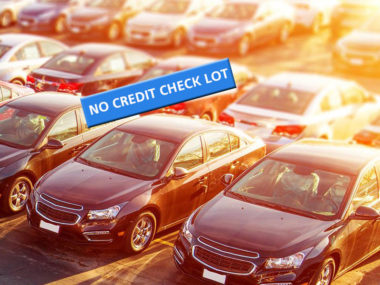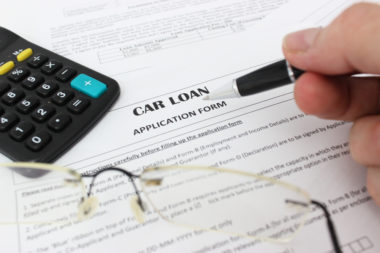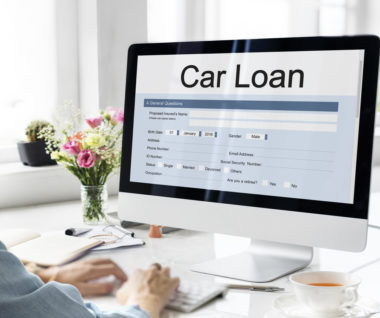Car shopping can be intimidating. It’s one of those rare events where you spend thousands of dollars within days or even hours.
If you’re preparing to purchase a vehicle, here are a few tips to help you go into the car-shopping process as financially prepared as possible.
Table of Contents
Calculate How Much You Can Pay a Month
The first thing you want to do is calculate approximately how much you can afford to spend on a car at the moment. Fortunately, the cost of a car loan is fairly easy to estimate.
As a general rule of thumb, aim to spend 10% or less of your net pay (that is, the amount left over after taxes) on your car loan.
Start by figuring out the most money you can spend per month on a car payment. Take a pay stub and calculate your monthly take-home pay. Then, multiply that number by 0.1. For instance, say you have a monthly salary of $5,000. That would give you $500 per month to spend on a car loan.
Determine the Total Amount You’re Willing to Pay for a Car
Once you have an approximate monthly payment calculated, it’s time to figure out how much you can spend on your new vehicle.
Use an online auto-loan calculator that allows you to input a targeted monthly payment in order to flesh out the size of the budget that you can work with.
Try to keep the term of your loan as short as you can — no more than 48 months, if possible. The longer the loan, the quicker you’ll run into higher interest rates, and the more you’ll increase the chances that you’ll be paying off the loan long after the car has passed on.
In addition, add up any savings you may have set aside to use as a down payment on your new vehicle. Then calculate the trade-in value of any existing car you may be swapping out when you buy your new car. It’s generally recommended that you try to pay around 20% of the value of the new car upfront, including the trade-in value of your old car and a cash down payment.
In the above example, at a payment of $500 per month with a 48-month loan, a 4.4% interest rate, and a $4,000 down payment, you could afford a car that is roughly $22,000 in value and still stay within your budget.
At this point, you have your down payment, your maximum monthly payment, and a ballpark figure of how much you can spend on your vehicle. However, you haven’t quite taken everything into consideration yet.
There are several other car-related expenses that come with purchasing a vehicle, including:
- Sales tax.
- Registration fees.
- Documentation fees.
These will vary by state, but each should be researched carefully and planned into your expenses if you don’t want to be caught by surprise when you see your total bill go up by a few thousand dollars at checkout.
Projected Auto Expenses
Along with limiting your car loan costs to 10% of your take-home pay, it’s also recommended that you spend no more than 20% of your pay on your total car expenses, including:
- Regular maintenance.
- Car insurance.
- Car repairs.
- Fuel costs.
- License plates.
Compared to your loan, these car-related expenses can be a bit tricky to estimate.
For instance, considerations such as the value of your car and your driving record can change the cost of your insurance policy, while unscheduled maintenance or unexpected repairs can cost hundreds or thousands of dollars at a time with months in between repairs.
If you have past insurance, you can use that to at least estimate what your future policy might cost. You can also call an insurance provider and ask for a quote.
In addition, conduct research to find estimates for maintenance and repairs in your area. What does it cost for an oil change, new tires, or minor repairs?
You can also estimate fuel costs by figuring out how many miles you drive each month, dividing your miles by the average fuel economy of most vehicles — usually around 25 miles per gallon — and then multiplying that total by the current cost per gallon of fuel in your region. For instance, if you drive 500 miles per month and gasoline currently costs $2.50 per gallon, your monthly fuel estimate would be $50.
It’s important to come up with the best estimates that you can wherever possible in order to find that sweet spot where your expenses stay below 20% of your net pay.
Finding a Car to Purchase
Once you have your finances sorted, it’s time to actually hit the car-lot pavement and start shopping. Here are a few things to keep in mind as you do so:
- New or used: Do you want a new car or a used car? The former costs more but is less likely to have issues. The latter is affordable but less dependable and can lead to pricey repairs.
- Do your research first: Much like your budget, it’s important to research specific models or brands and their pros and cons before setting out on your search.
- Gauge your needs: Do you have a long daily commute or do you only need a car on occasion? The amount you use your car can affect what kind of vehicle you end up getting.
- Always test drive a car: Never buy a car without test driving it first. If possible, also ask for permission to drive it to a mechanic that you trust in order to get a third-party opinion.
If you go into the car-buying experience with both eyes open, you’ll be better prepared for the overwhelming number of options that will present themselves. Having a budget in place, in particular, can help you make wise decisions and avoid committing to more than you can afford.
Image Source: https://depositphotos.com/





